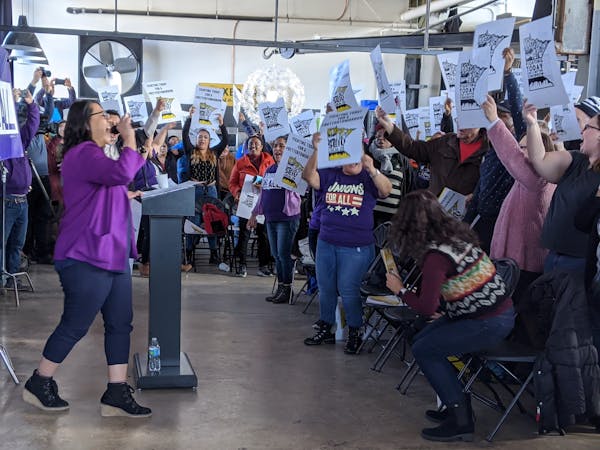Union membership continued to decline in Minnesota and nationally in 2019 even as employers added jobs, according to a year-end report from the U.S. Bureau of Labor Statistics.
The number of workers in unions fell by 170,000 last year while U.S. businesses added 2.1 million jobs, putting union membership at 10.3% of the total labor force. It was the lowest share since 1983.
The decline was slight, about 0.2%, but reflects a decade of shrinking influence of organized labor in the workplace. A driving factor was declining job growth in private-sector industries with historically strong union representation, such as manufacturing, transportation and mining.
In Minnesota, union membership dropped by 31,000 to account for 13.7% of the workforce.
"Some people were holding their breath expecting a significant drop in public-sector membership, which did happen, but it wasn't a catastrophic decline," said John Budd, a labor relations and policy expert at the University of Minnesota's Carlson School of Management.
The locals in Minnesota have also held several unionization votes and continue to be vocal.
On Friday, SEIU Healthcare Minnesota announced its 1,800 members at HealthPartners overwhelmingly approved a strike should bargaining on a new contract continue to stall.
Workplace actions across the country involved 485,000 employees in 2018, according to the Labor Department, the highest figure in 32 years.
The labor-statistics report was the first from the Labor Department since a 2018 Supreme Court decision banning unions that represent government workers from collecting mandatory dues from nonmembers to cover collective bargaining costs.
While union membership fell among federal and local government workers, the share of state government workers ticked up during the year, from 28.6% to 29.4%, news that was heralded by labor leaders.
"Nurses, school employees, corrections officers, emergency medical technicians and others will not forfeit their seat at the table or let their voices be silenced," Lee Saunders, president of the American Federation of State, County and Municipal Employees (AFSCME), said in a statement.
AFSCME reported a loss of 6% of its members, but said more focused outreach efforts blunted losses that some had predicted could reach up to 30% in the wake of the high-court's ruling.
While the Labor Department's membership figures confirm long-standing trends, they don't reveal the increased worker activism that has been happening outside of unions in recent years, according to some economists and labor scholars.
"Whether it's sex harassment policies or wages or lack of paid sick time off, there are signs of growing frustration and there are signs of worker activism," Budd said. "But there are challenges legally and practically with bringing that all the way to fruition in terms of traditional unionization."
For example, Google employees have walked off the job to protest issues from sexual harassment to workplace conditions and even corporate relationships with foreign governments.
The "Fight for $15" movement, launched in New York City in 2012 when 200 fast-food workers walked off the job to demand higher pay, has put public pressure on businesses and sparked state and local governments to improve the minimum wage. Among them was Minneapolis-based Target Corp., which committed to raising its base pay to $15 an hour by the end of this year.
In 2017, Minneapolis became the first Midwestern city to adopt a phased-in $15 an hour minimum wage, and St. Paul followed suit.
Jackie Crosby • 612-673-7335 Twitter: @JackieCrosby
